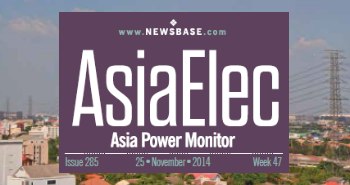MDB climate finance reaches $66bn in 2020
Multilateral development banks (MDBs) provided $66bn of climate finance in 2020, up from $61.6bn in 2019.
The banks, led by the EBRD, said in their 2020 Joint Report on Multilateral Development Banks’ Climate Finance that 58% of finance, or $38bn, was provided to low- and middle-income economies.
However, MDBs’ commitment to low- and middle-income economies actually fell from $41.5bn in 2019, which the banks blamed on the need to support poorer countries to recover from the economic and health impact of coronavirus (COVID-19).
The MDBs also provided $85bn of co-financing during 2020, meaning that total climate finance and co-finance reached $151bn. The amount of private direct mobilisation stood at $5.9bn.
In terms of regions, sub-Saharan Africa received $9bn, while East Asia and the Pacific received $6bn and South Asia $8bn.
Meanwhile, the EU received $26bn in support, illustrating how developing countries in Asia and Africa continue to have difficulties in accessing soft lending to promote green investment.
For example, South Africa’s climate finance from the MDBs rose from $55mn in 2015 to $557mn in 2020. By contrast, Spain received $1.9bn in 2015 and $3.2bn in 2020.
The report said that over the past six years, MDBs have jointly committed a total of $257bn in climate finance, of which $186bn had been directed at low- and middle-income economies.
The MDBs from 2021 intend to increase their green financing commitment to $65bn per year, with $50bn of MDB climate finance for low-income and middle-income countries; an increase in adaptation finance to $18bn; and private direct mobilisation of $40bn.
“The MDBs will continue to improve their tracking and reporting of climate finance in the context of their commitments to ensure consistent financial flows to the countries’ long-term, low-carbon and climate-resilient development pathways, as established in…the Paris Agreement,” said the 2020 report.
Of the 2020 total of $66bn, $63bn came from the MDBs’ own accounts and almost $3bn from external resources channelled through and managed by MDBs.
These included the Climate Investment Funds, Green Climate Fund and climate-related funds under the Global Environment Facility, EU blending facilities and others.
“Climate action has never been more urgent than now. Speed, scale and financing are critical to enable transition into low-carbon and climate-resilient development pathways and achieving the universally agreed goals of the Paris Agreement,” said ADB’s vice-president for knowledge management and sustainable development, Bambang Susantono.
Nearly $50bn (76%) of total MDB climate finance in 2020 was associated with climate change mitigation investments that aim to reduce harmful greenhouse gas (GHG) emissions and slow down global warming.
Of this, 50% went to low- and middle-income economies. More than $16bn (24%) for climate change adaptation finance was invested in adaptation efforts to help countries build resilience to the mounting impacts of climate change, including worsening droughts and more extreme weather events, from flooding to rising sea levels. Of this, 83% was directed to low- and middle-income economies.
Looking ahead, the report states that the AfDB aims to double its climate finance to $25bn for the period 2020-25, giving priority to adaptation finance.
Asia’s ADB wants that, by 2030, at least 75% of the number of its committed operations (on a three-year rolling average, including sovereign and non-sovereign operations) will be supporting climate change mitigation and adaptation.
The figures cover the EBRD, the African Development Bank (AfDB), the ADB, the Asian Infrastructure Investment Bank (AIIB), the European Investment Bank (EIB), the Inter-American Development Bank Group, the Islamic Development Bank and the World Bank Group.




Follow us online